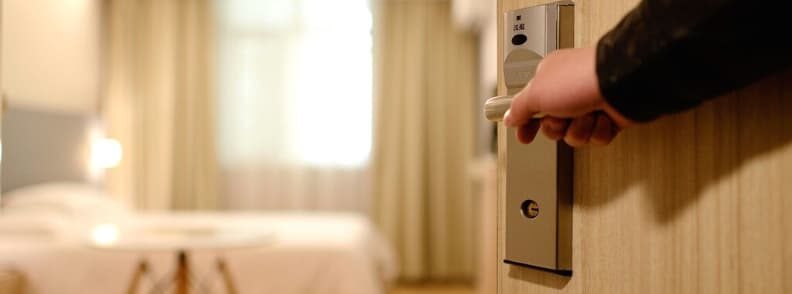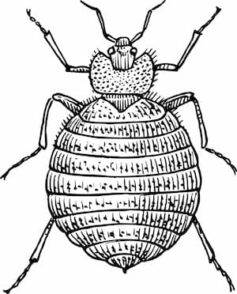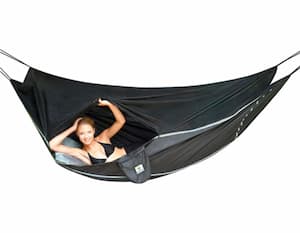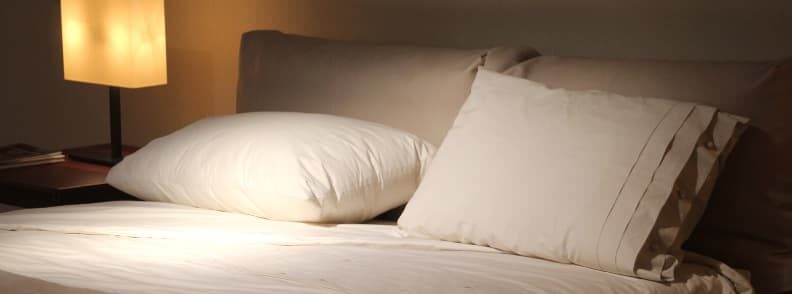When traveling, you want it to be as stress-free and as enjoyable as possible. We travel to savor different cultures, foods, and activities. The last thing you want is bed bugs to drag down your enjoyment by making your skin itch incessantly.
Luckily for you, I’ve got just the right information to help you stay on your toes in the face of possible bedbug infestations.
How To Get Rid Of Bed Bugs
Disclosure: Some of the links below are affiliate links. This means that at no extra cost to you, The Travel Bunny will earn a small commission if you click through and make a purchase. Thank you!
What are bed bugs?
Bed bugs are tiny brown insects, with a thirst for human blood. This is why they are often found on bedding, as they have easy access to our blood as we sleep. However, it would be a mistake to think they just stay around your bedding, as they can be found around furniture, wardrobes, and carpets, so they are quite difficult to spot.

Where can you find bed bugs?
The common bed bug (Cimex Lectularius)can be found on any continent in the world unless you’re holidaying in Antarctica. They do prefer the milder and more humid climates, a problem considering many countries are facing longer and hotter Summers.
It is also a myth to think that bedbugs will exclusively stay in poorly kept, unclean hotels. If anything, bedbugs prefer cleaner environments, so you must check every hotel you stay at, regardless of how many stars they have. Bedbugs are a universal problem, so you must keep yourself vigilant.
How do you know if you’ve got bed bugs?
It can be difficult to spot an infestation since those little bloodsuckers are minuscule, as are the signs they leave behind. Let’s take a look at them:
• Bed bugs bites. They are agitating, itchy blotches on your skin and will usually be in tight clusters. However, this isn’t the most concrete evidence, as many insects can cause lumpy insect bites on the skin.
• Black and brown substances around your mattress and other furniture. These are bed bugs feces and they can often be found in tight clusters around the places where they feed, or near where they nest.
There may also be rust-colored stains on your bedsheets, which may have been caused by a bite or a crushed bedbug. Again, be careful of attributing this solely to bed bugs, as they are not the only insects capable of this
How to inspect a room for bed bugs
While they are only 5mm in size, it’s still easy to notice if a location is infested, you just need a keen eye.
- The first step would be to keep your luggage on a rack, or in the bathroom. Bedbugs are unlikely to be in these locations and it keeps your luggage safe, just in case your room did have an infestation.
- Strip down the bedding, keeping an eye out for any black or brown gooey substances.
- Check the mattress thoroughly for any stains or bugs and then check the mattress encasements. The tiny bed bugs often nest in the box springs and bed frames, so check for any sight of bedbugs, or any shredded carapaces they might have left behind.
- It would also be a good idea to check the furniture around the room. Inspect any sofas or upholstered furniture, as while they might not be the prime location of bedbugs, they can still nest here.
- Check under any cushions and around any holes in bed or elsewhere for any of the telltale signs.
On the right, an image to show you what do bed bugs look like.

If you do find that your room has an infestation, always ask for a different room, preferably one that is further away from the infested room. The hotel shouldn’t have any objections and will move you promptly.
How to deal with bed bug bites
Bed bug bites can be incredibly aggravating, as they itch almost constantly. They appear as red swellings on your skin and can take a while to go away. Here is what we suggest that you do if you notice bed bug bites:
Treat them the same as you would treat most insect bites; take anti-histamine tablets or creams. This will help with the swelling and can temporarily relieve you of the itchiness. Calamine lotion can also help with the itchiness as well.
If you have taken an allergic reaction to the bites, a trip to the doctor’s might be needed. They will give you stronger creams and medicines in order to deal with the problem.
Unfortunately, there is no quick cure for the bites and the creams and pills will only help with the situation, not solve it outright. You will just need to wait for the sores to go on their own time. Just don’t scratch them, as dirt can get trapped under your fingernails and can lead to them getting infected.

The Hammock Bliss Sky Bed Bugs Free brings hammock camping to new heights, introducing the world’s first fully flat gathered end hammock, with built-in bug security.
The Bliss Sky BedBugs Free Hammock offers an incredibly flat comfort area with the help of an inflatable mattress, thanks to an innovative patent-pending asymmetric design.
How to pack your luggage to protect it from bed bugs
Bringing back souvenirs from your trips is always an enjoyable experience. Bringing back bedbugs in your suitcases? Not so much. Here’s how to pack your luggage to make sure this doesn’t happen.
First, do check hotel review websites before booking a stay. While bedbugs are a problem for any hotel, you can gauge how seriously they take the problem, based on user reviews. Simply put, if there are many complaints about bedbugs, it might be worthwhile staying somewhere else.
Use hard shell luggage to safeguard yourself from any bedbugs trying to find a better life in another country. Soft-shell suitcases often have tiny holes in the fabric, which is plenty of room for a bed bug to squeeze through. If you do take fabric suitcases, get them in brighter colors, as this will make bedbugs easier to spot on them.
Wrapping your luggage in plastic is also an excellent way to protect it. It will prevent any bedbugs from getting in through any small holes in zippers or fabrics.
While in a hotel, it is also best to put your clothes back into your suitcase. Don’t leave your clothes on the bedding or in any wardrobes, even if you can’t see any signs of an infestation. And always wash your clothes immediately after coming home. The less chance these beasts have of infesting your home, the better.
How do I get rid of bed bugs myself when I get home
Sometimes, no matter how vigilant you were, these six-legged vampires will still find a way to come back with you. You can make them regret these decisions in a few steps.
Make sure to tumble-dry your clothes as soon as you come back. Do not unpack them until you’re ready, as you want to give bedbugs as little of a window as possible to escape and infest your home. Tumble-dry your clothes at high heat and do not wash them first. Washing them won’t remove the bedbugs or the bed bug eggs, but the high heat will.
Vacuum almost everything that isn’t nailed down. Carpets, furniture, any cracks, and crevices. Hopefully, this will alleviate the problem if you were quick enough and thorough enough.
Unfortunately, bedbugs are quite a tenacious pest and even if you get rid of 99% of them using pesticides and other methods, it still only takes one pregnant nymph to restart the colony. It is likely in this situation, that you will need to call an exterminator or bedbug specialist. They will be able to give you advice and solutions to properly solve the problem with a bed bug treatment.
Conclusion
While bedbugs are annoying in any situation, they are especially annoying while travelling. Just remember to:
- Keep a keen eye out when you enter any new hotel rooms.
- Keep that luggage secure with plastic and inspect your rooms properly, wherever you stay, whether it be a five-star, swanky hotel, or a one-star dive.
- Always tumble-dry your clothes on your return home.
You don’t want new bed bugs roommates. But most importantly, enjoy your travels!
About the author

Alexander Crawley is an entomology consultant for Fantastic Pest Control. As a psychology graduate, he got bored after years of studying humans and found his true fascination – bugs.
You too can become a guest blogger on The Travel Bunny. Just submit a free guest post.
You should also read these articles on The Travel Bunny blog
Hostels and budget hotels: Top 10 survival tips
How to prepare for your first backpacking trip to Europe
Top 4 Hostel safety tips for teens

